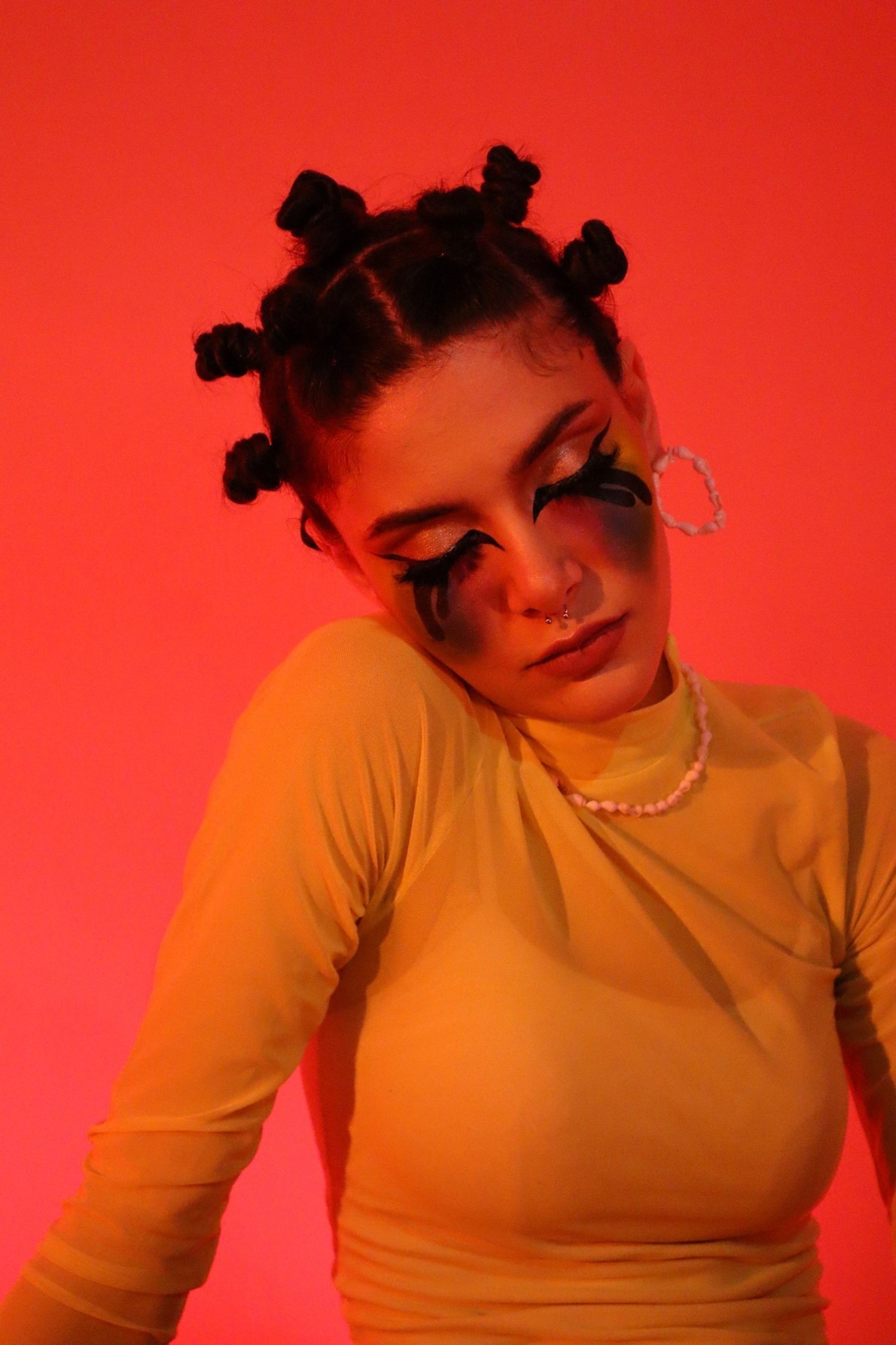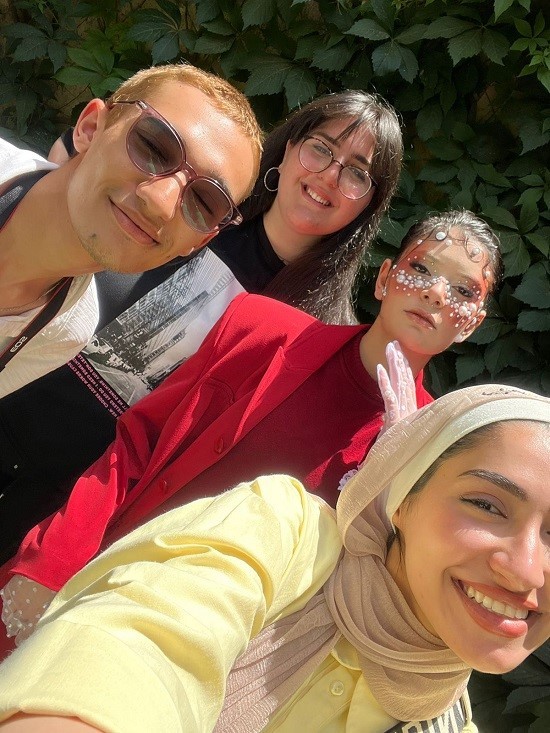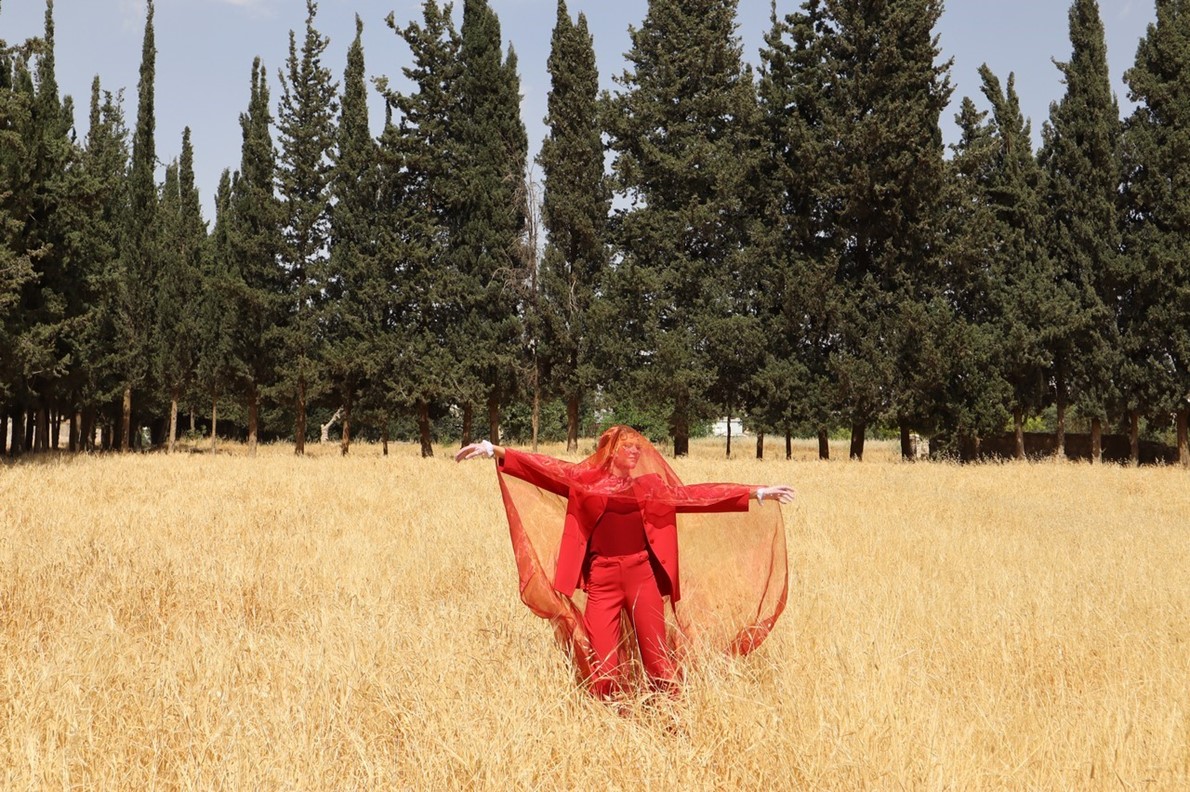Becoming is a bold, no-holds-barred visual storytelling of several
up-and-coming
filmmaking students. This short film tightly packs a complex tale
about breaking away from societal chains and the right to forge individual
identities. It also explores themes of freedom and discrimination, which are
highlighted through a series of fragmented scenes.
اضافة اعلان
The film follows Akka, a young woman in her
twenties, who is dissatisfied with her job at a local bookshop. She dreams of
being a contemporary dancer but suppresses this desire due to financial
difficulties,
social norms, and societal expectations. She neither has the
courage to accept her inner calling nor to pursue dancing as she anticipates
the challenges and rejections she will experience.

On a regular day at the bookshop, while reading as
usual, Akka unconsciously starts tapping on the table. This tapping opens a
portal to a dream-like reality where music begins to play. She initially
resists going with the flow of the music, but gradually starts breaking the
invisible chains, following the rhythm, and moving freely with the beat.
Eventually, she comes out of the otherworldly portal and returns to her seat at
the bookshop with a full understanding of what she really wants.
The alternating scenes of her consistent torments,
daily burdens, current life, and future lives paints a glowering miasma of
shadows. Akka overcomes these difficulties in vivid flashes, attempting to
break free from the normative mold. The story is a metaphor of a woman
discovering her two identities and of not having the life she desires. These
strong ulterior messages are communicated to affirm people’s, especially
women’s, choices and, more importantly, the freedom of choice itself.
A motif in the film and its posters is a pearl
necklace firmly wrapped around a fish. “There is a symbolism behind the fish
and the pearls. The fish dances around freely in the water, but as soon as it
is moved out of its safe zone, it dies. Fish, unlike other animals, do not
decay immediately after death; they keep an appearance of freshness,” said
Tamara Al-Ajlouney, the film’s director.
According to Ajlouney, there are several references
in the film inspired by other visual works: “We mainly took (the television
show) Euphoria as a makeup reference. Marcell Rév, the cinematographer of
Euphoria, tried to emulate emotions through colors, so the strong red we choose
helped elevate the visuals out of reality and push the emotions into the image.
The red symbolizes rebellion, breaking restrictions, and the strength derived
from freedom.”

“For the dramatic smash cuts that interrupt the
dancing, we got this inspiration for this editing technique from the movie
Lucy, which is to put unrelated images together to deliver certain feelings or
ideas.”
“Even the chained fish with pearls is inspired by a
painting by
René Magritte, who was a surrealist painter. Surrealism goes
perfectly with our concept that balances rational visions of life and the one
that assert the power of the unconscious and dreams. And we believe that the
first step to achieving your dream and breaking all chains is to accept that
dream in the conscious and the unconscious mind.”
We mainly took (the television show) Euphoria as a makeup reference. Marcell Rév, the cinematographer of Euphoria, tried to emulate emotions through colors, so the strong red we choose helped elevate the visuals out of reality and push the emotions into the image. The red symbolizes rebellion, breaking restrictions, and the strength derived from freedom.
The film’s crew consists of students who took a
filmmaking class together, Ajouney explained. “We did not know one another well
but we recognized that we all shine in different ways. Some of us multi-tasked
our way till we go the final film. I not only directed the film, but I also
co-wrote the script with Hescham Al-Karshan, who served as cinematographer and
assisted Akka Hamdan in the post-production process. Akka was our main
performer, Mayar Kabajah and her sister Lour oversaw costume design and hair
styling, while Hala Aljabrah did an outstanding job on the makeup,” Ajlouney
said.
The crew went through several brainstorming sessions
before coming up with the final concept. Filming began on May 14 at Sanad
Bookshop in downtown Amman. They moved to a dancing room at the
University of Jordan’s Faculty of Arts and Design. Filming concluded on May 27 when the last
scenes were shot at Kabajah’s house.

A
booklet was created to record the process of
making the film. It includes the conflict, structure, storyboards, shot list,
call sheet, outfit sketches, and makeup looks. The booklet will serve as a way
for the crew to remember the moments they shared while working on their debut
film.
This type of ambitious work highlights the potential
of college students and how they should be empowered to pursue their creative
interests. Ajlouney told Jordan News: “One of the biggest challenges was
to bring our vision to life on a low budget. We paid for everything from our
own personal stipend, and we got all the equipment we needed through friends
and connections. Even the locations we scouted were given to us for free.”
“After pouring our hearts into this, we finally got to see
it on the big screen in a screening event facilitated by our beloved professor,
Diran Malatjalian, who has been our biggest supporter since day one, at the
University of Jordan. Hopefully, we will be participating in screenings and
film festivals around the world,” Ajlouney concluded.
Read more Lifestyle
Jordan News









